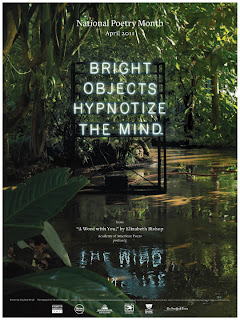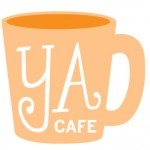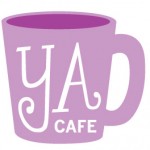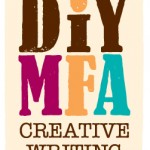Even though April is over, DIY MFA continues, though in a more relaxed fashion. Since many participants from April are new to DIY MFA, I thought I’d do some review posts every week to go over some of the DIY MFA concepts we discussed back in September. Today we’ll go over the four core elements of a Writing MFA (Master of Fine Arts) and how you can do-it-yourself to create your own DIY MFA.
In a Writing MFA, writers must…
 Read. Most MFA programs have a literature component, where students must take a series of literature classes along with their writing coursework. At The New School, not only do you have to take literature classes, you actually have to write a literature thesis as part of your graduation requirement. In that sense, reading is a huge component of the MFA process. Similarly, DIY MFA puts an emphasis on reading the literature. By creating a reading list, reading the books and writing responses to what you read, you can simulate the literature study you would do in an MFA program.
Read. Most MFA programs have a literature component, where students must take a series of literature classes along with their writing coursework. At The New School, not only do you have to take literature classes, you actually have to write a literature thesis as part of your graduation requirement. In that sense, reading is a huge component of the MFA process. Similarly, DIY MFA puts an emphasis on reading the literature. By creating a reading list, reading the books and writing responses to what you read, you can simulate the literature study you would do in an MFA program.
Write. Of course a writing program must include a lot of writing, and so must DIY MFA. In a writing program you’ll receive instruction on the craft of writing and be pushed to produce a substantial number of pages each semester for your workshop. This process of writing and rewriting helps you hone your craft and strengthen your own abilities. Without a writing component, the MFA (including the DIY MFA) would miss the point. To be a writer, you have to write. It’s that simple.
Workshop. The workshop is a central component of any MFA in writing. By giving critique to other writers, you sharpen your reading skills. In receiving critique on your own work will learn to make your writing stronger, as well as develop skills to handle rejection and criticism on your work.
Connect. One component that many writers forget is connecting to the writing community. Connecting can happen in many different ways. Attending readings, going to conferences, connecting with other writers via the internet… these are all great ways to engage with the writing community. The reason community is so important for writers is that otherwise writing can be a very lonely enterprise. Community gives us a reality check and helps us stay motivated.
Which of these elements is easiest for you? Which is the biggest challenge?











 Call me Gabi (pronounced gah-BEE). I'm a writer, freelance teacher, and a lover of books and words. I'm also the instigator of DIY MFA. iggi's my sidekick, but he thinks he's the brains behind this operation.
Call me Gabi (pronounced gah-BEE). I'm a writer, freelance teacher, and a lover of books and words. I'm also the instigator of DIY MFA. iggi's my sidekick, but he thinks he's the brains behind this operation.
 Body Image in Literature
Body Image in Literature YA Cafe: Interview with Julia Mayer
YA Cafe: Interview with Julia Mayer YA Cafe: New and Improved!
YA Cafe: New and Improved! The new face of DIY MFA!
The new face of DIY MFA!